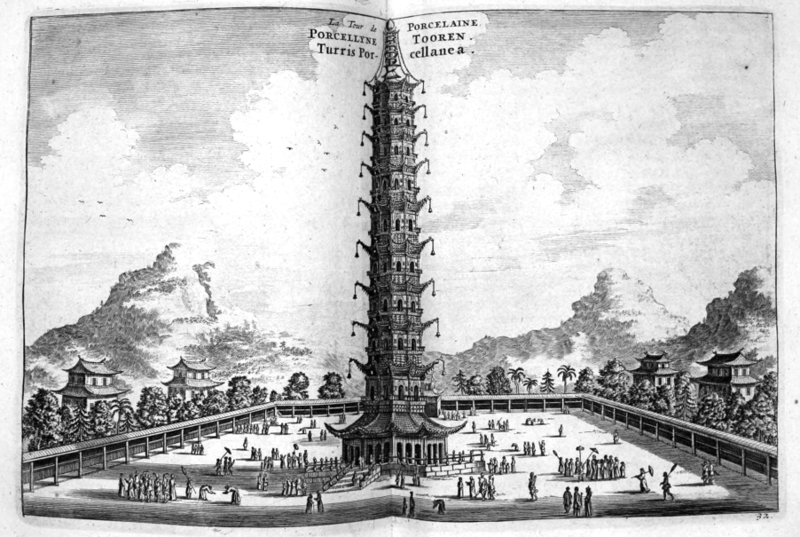
The Porcelain Tower of Nanking in China was once considered to be one of the seven wonders of the medieval world. Built by the emperor Yung-lo during the Ming Dynasty in the fifteenth century, this temple stood on the site of a former pagoda that was much smaller and housed a statue of Buddha that was placed there by an Indian priest. In Chinese, the temple that Yung-lo built was called Bao’ensi, meaning “The Temple of Gratitude”, this magnificent Buddhist pagoda was built of white porcelain bricks that were dried in the sun. When sunset came, the bricks were not left in the dark, as special lamps were kept by them to continue the drying process. These bricks, once dried, had a beautiful natural shine to them. The new pagoda that was to be built was assembled in an octagonal shape, the shape being conspicuous in Buddhism, as it symbolizes the Eightfold Path in this religion. The base of the tower was 95 feet in diameter and 250 feet tall. The tower had eight stories and nine eaves spanning the perimeter of each story. Each succeeding story was slightly smaller than the one below it. Colored tiles at the base level formed animals, flowers, and Chinese landscapes. Each story was accessible through a spiral staircase that spanned the entire height of the pagoda. The eaves were made of green tiles glazed to produce the same glass-like effect in the sunlight.
At the top of the pagoda was a spire that contained five pearls that would serve as a good luck charm for the city of Nanking, averting natural disasters and attacks from outside the city.
The Porcelain Tower stood at the entry of Nanking from 1413 until 1809 when the top of the tower was struck by a bolt of lightning, possibly because of an iron rod that was installed in the spire. The spire and top three stories fell to the ground and fifty years later, the Taiping rebels stormed the city and finished off the partially destroyed Porcelain Tower. The Taiping Rebellion was led by a Chinese convert to Christianity, who wanted to remove all influences of traditional religion including Buddhism, and did not waste any time in taking down the remains of the once standing Porcelain Tower.
Even though the tower is no longer standing, its existence in the past is a symbol of what this former Chinese capital was like during its time during the Middle Ages.
Image Credit: Jacob van Meurs, Public domain, via Wikimedia Commons.


